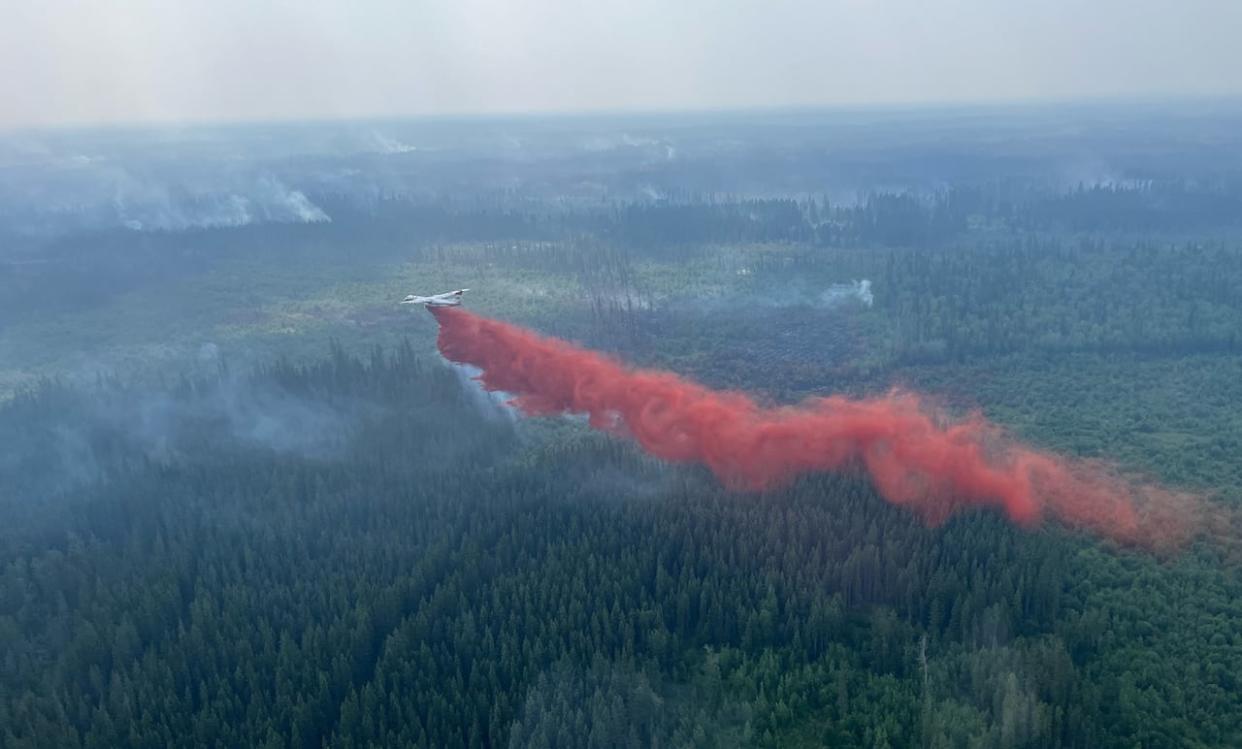Alberta firefighters facing challenging conditions as heat wave sweeps Western Canada

Sweltering conditions from a heat wave gripping Western Canada are presenting challenging conditions for firefighters in northern Alberta on Tuesday.
Wildfire danger warnings spread across Alberta over the weekend with extreme temperatures and out-of-control fires in the northern areas of the province.
The wildfire danger level is very high in the Fort McMurray forest area, where at least one out-of-control fire continues to spread.
"Today and the next few days are expected to be challenging for our operational efforts," Alberta Wildfire said in an update Tuesday morning.
Crossover conditions — when humidity is lower than temperature — are expected, suggesting extreme fire behaviour.
No evacuation orders had been declared as of 10 a.m. Tuesday.
Wildfire officials forecast a southwest wind of 15 km/h, with winds expected to shift south in the afternoon at 20 km/h.
Temperatures in northern Alberta are expected to climb to between 30 and 35 C and will persist until at least midweek, according to Environment and Climate Change Canada.

Heat warnings for Tuesday spread throughout Alberta. (Alberta Wildfire)
A high of 34 C is expected for the Fort McMurray forest area Tuesday.
The out-of-control Cattail Lake complex fire is located roughly eight kilometres northeast of industrial facilities and about 50 kilometres northeast of Fort McKay, and 70 kilometres northeast of Fort McMurray. It covers about 14,000 hectares.
As of Tuesday morning, 195 people were working on fires in the area, including 89 firefighters, 17 helicopters completing bucketing operations, and 36 heavy equipment groups working on day and night operations.
Minimal fire behaviour was observed on Monday, due to smoke coming from the wildfire and another in High Level. The smoke increased humidity, which helped stop significant wildfire spread.
Oilsands precautions
Cenovus Energy said Monday it is demobilizing some staff at its Sunrise oilsands project as a precaution due to the evolving wildfire situation. Sunrise, which produced about 49,000 barrels per day last year, is about 60 km northeast of Fort McMurray.
Cenovus said its operations remain unaffected, but staff who are not directly involved in operations at Sunrise are being demobilized.
"We are in close contact with provincial and municipal agencies and supporting their efforts in the area," Cenovus said in a statement.
Last week, Suncor Energy shut down its 215,000 barrel-per-day Firebag oilsands site and curtailed some production due to the wildfires.
Extreme wildfire danger
On Tuesday, the wildfire danger for the Edson forest area was classified as high. Alberta Wildfire said forest fuels are dry. The fire risk is serious and conditions would make fire suppression efforts difficult.
As of Monday, the wildfire danger level for the High Level, Alta., area was classified as extreme.
Communities were being warned of heavy smoke, as firefighters continue to battle 39 wildfires burning in the area, including 10 that are out of control.
One of the wildfires is along the border shared with B.C., and another one is along the border shared with the N.W.T.
The Semo wildfire complex was estimated to be around 19,000 hectares in size as of Tuesday. The largest of the wildfires, thought to be caused by lightning, is out of control. Alberta Wildfire said the fire doesn't pose a threat to any community at this time.
The wildfire complex is being managed by an incident management team. More resources will be arriving in coming days.
There are 113 firefighters and support staff, eight helicopters and 18 heavy equipment teams assigned to the complex.
A wildfire alert was issued by Little Red River Cree Nation just after 1 p.m. MT Monday for the community of Garden River.
An alert also remains in effect for everyone in the community of Chateh, and the areas to the west and southwest.


